Get ready to embark on an unforgettable winter adventure as we journey to the Annapurna Base Camp in January! This is the perfect time to explore the beauty of the Himalayas as the crisp winter air and snow-capped peaks create a stunning landscape that will take your breath away. Trekking in January is a unique experience as the trails are less crowded, offering a peaceful and serene atmosphere. You’ll get to witness the natural beauty of the region in all its glory, as the snow creates a picturesque backdrop against the lush forests and valleys.

Along the way, you’ll encounter friendly locals who will welcome you with open arms and share their rich cultural heritage with you. As you reach the base camp, you’ll be awestruck by the panoramic views of the towering mountains, including the majestic Annapurna massif. So, bundle up, strap on your snow boots, and get ready to embark on a thrilling adventure of a lifetime!
Location and Altitude
Annapurna Base Camp is a high-altitude trekking destination located in the Himalayan range of central Nepal. It sits at an elevation of 4,130 meters (13,549 feet) above sea level, making it a challenging but rewarding adventure for trekkers of all levels.
Also Read: Everest Base Camp in January
The base camp is situated in the heart of the Annapurna Sanctuary, a natural amphitheater surrounded by towering peaks including Annapurna South, Annapurna I, Machhapuchhre (Fishtail), Hiunchuli, and Gangapurna. The location of ABC provides trekkers with breathtaking panoramic views of these majestic peaks, as well as the chance to experience the unique culture and traditions of the local people.
Weather Condition
January is one of the coldest months in the Annapurna region, and the weather at Annapurna Base Camp can be challenging for trekkers. During this time of year, the temperature at the base camp can range from -10°C to 5°C (14°F to 41°F), and the region experiences occasional snowfall, especially at higher elevations.
Due to the cold temperatures and the snow, the trails can be icy and slippery making trekking more challenging. Despite the cold weather trekking to Annapurna Base Camp in January can be an unforgettable adventure providing trekkers with stunning vistas of the snow-covered peaks and the opportunity to experience the unique culture and traditions of the local people.
Average Temperature
The temperature at Annapurna Base Camp in January can vary greatly depending on the time of day and the altitude. During the day temperatures can range from -5°C to 5°C while at night, temperatures can drop to as low as -10°C.
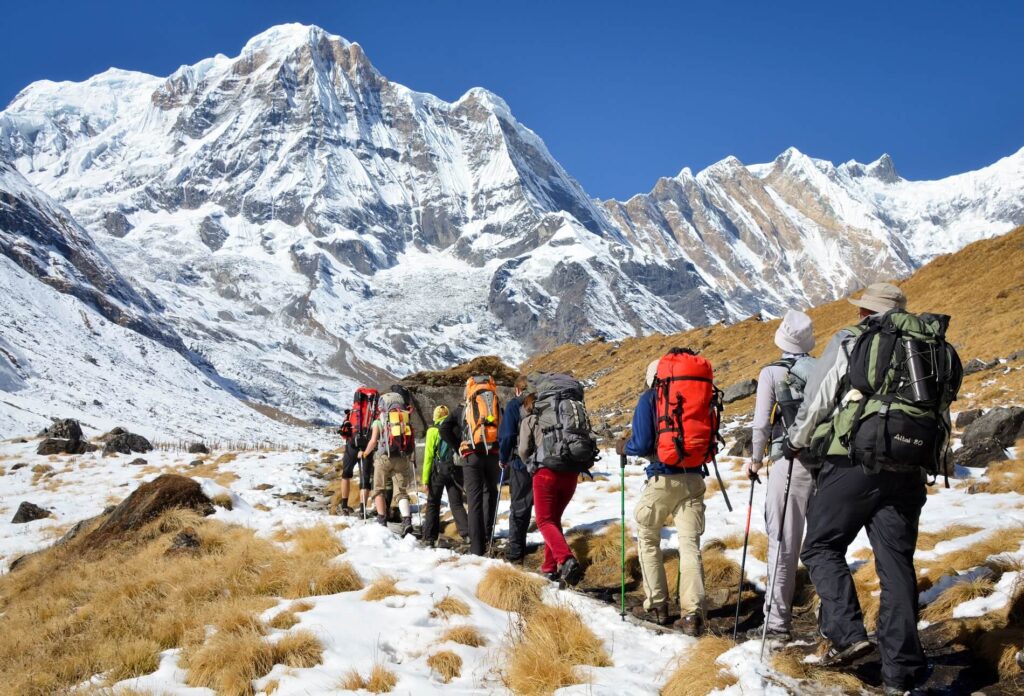
The base camp sits at an altitude of 4,130 meters (13,549 feet), which contributes to the colder temperatures experienced in the area. The lower temperatures, combined with the occasional snowfall, can make trekking to Annapurna Base Camp in January a challenging but rewarding adventure.
Kathmandu to Annapurna Base Camp
To get to Annapurna Base Camp from Kathmandu, you can follow the following steps:
- Take a flight or drive from Kathmandu to Pokhara, which is the gateway to the Annapurna region. It takes about 6-7 hours by road and 25-30 minutes by air.
- From Pokhara, you can take a bus or a jeep to Nayapul, which is the starting point of the trek. It takes around 1-2 hours to reach Nayapul from Pokhara.
- Begin your trek from Nayapul and follow the trail to Tikhedhunga, Ulleri, Ghorepani, Tadapani, Chhomrong, Dovan, Deurali, and finally to Annapurna Base Camp.
- The trek takes around 7-12 days, depending on your pace and the number of rest days you take. It is recommended to acclimatize properly and carry adequate supplies and equipment.
Highlights of Annapurna Base Camp in January
January is considered the winter season in Nepal and trekking to Annapurna Base Camp during this time can be challenging due to cold temperatures, snow, and icy trails. However, it can also be a unique and rewarding experience as the trails are less crowded and the views of the snow-covered mountains are breathtaking.
Here are some highlights of trekking to Annapurna Base Camp in January:
- Less Crowded: As January is not the peak trekking season in Nepal, the trails to Annapurna Base Camp are less crowded, which means you can enjoy the natural beauty and peaceful environment.
- Snow-covered Mountains: The Annapurna range is covered in snow during January, which makes for stunning views of the Himalayan peaks.
- Unique Experience: Trekking to Annapurna Base Camp in January can be a unique experience as you will encounter snowy trails, frozen waterfalls, and frosty vegetation.
- Local Culture: You can experience the local culture of the Gurung and Magar communities who live in the Annapurna region. They have their unique traditions, festivals, and lifestyle, which you can observe and learn about.
Crowd
In January, the crowd in Annapurna Base Camp is relatively low compared to other months due to the cold and harsh weather conditions. However, there are still a significant number of trekkers who visit the Annapurna Base Camp in January. The number of trekkers also depends on the weather conditions, and if the weather is clear then the crowd is likely to be higher. Despite the fewer trekkers in January, the Annapurna Base Camp can still be quite crowded, especially in the main tea-house areas. The tea houses offer shelter, warmth, and food which are essential for trekkers, and they tend to attract many people.
Festivals in Annapurna Base Camp
January is not the peak season for trekking in Annapurna Base Camp, as it is the winter season, and the weather can be quite harsh and unpredictable. However, some festivals are celebrated in the region during this time. Here are a few:
- Maghe Sankranti: This festival usually falls on January 14th, and it marks the beginning of the Nepali month of Magh. It is a harvest festival and people celebrate it by taking a dip in holy rivers, flying kites, and eating traditional foods.
- Lhosar: This is a Tibetan New Year festival, and it usually falls in late January or early February. It is celebrated by the Sherpa and Tibetan communities in the Annapurna region. People dress in traditional clothes, perform dances, and enjoy feasts with their families and friends.
- Maha Shivaratri: This is a Hindu festival dedicated to Lord Shiva, and it usually falls in late February. People offer prayers to Lord Shiva, fast, and stay up all night to chant his name and meditate.
Flora and Fauna
The Annapurna Base Camp trek is located in the Annapurna Conservation Area, a protected area that spans over 7,629 square kilometers in the central Himalayas of Nepal. The conservation area is known for its stunning landscapes, including the Annapurna mountain range, which features some of the highest peaks in the world.
The trek takes visitors through a diverse range of habitats, from subtropical forests to alpine meadows, and offers the chance to see a wide variety of flora and fauna.
Flora
Rhododendron:
The Annapurna region is known for its stunning rhododendron forests, which can be found in several areas along the trekking route. These forests are especially beautiful during the spring when the flowers are in bloom.

Bamboo:
Bamboo forests are common along the lower elevations of the trek, especially in the area around Chomrong. These forests provide habitat for a range of wildlife, including langur monkeys and birds.
Oak:
Oak trees can be found throughout the trek, especially at lower elevations. These trees provide important habitat for a range of wildlife, including deer and birds.
Juniper:
Juniper trees are common at higher elevations, especially above 3,000 meters. These trees can survive in harsh mountain environments and provide important habitats for wildlife like the snow leopard.
Fauna
As for fauna, the Annapurna region is known for its rich biodiversity, with a range of mammal, bird, and reptile species that call the area home. Some of the most notable examples include:
Snow Leopard:
The snow leopard is a rare and elusive big cat that can be found in the high-altitude regions of the Annapurna range. Although sightings are rare, the conservation area is home to a significant population of these animals.
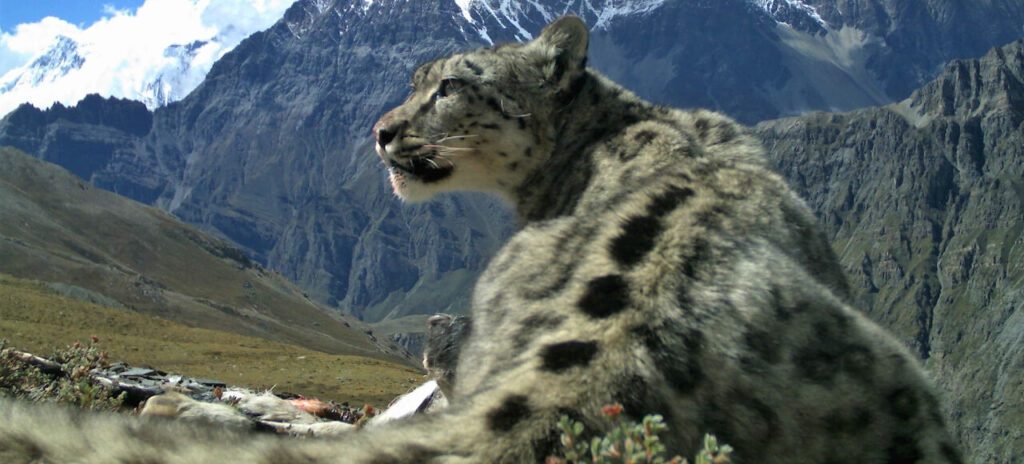
Himalayan Tahr:
The Himalayan tahr is a type of mountain goat that can be seen grazing on the slopes throughout the trek. These animals have shaggy coats and curved horns and are well adapted to life in the harsh mountain environment.
Musk Deer:
The musk deer is a small deer with distinctive fangs that can be seen in the forested areas of the trek. These deer are known for the musk that is produced by glands near their rear end, which is used in traditional medicine.
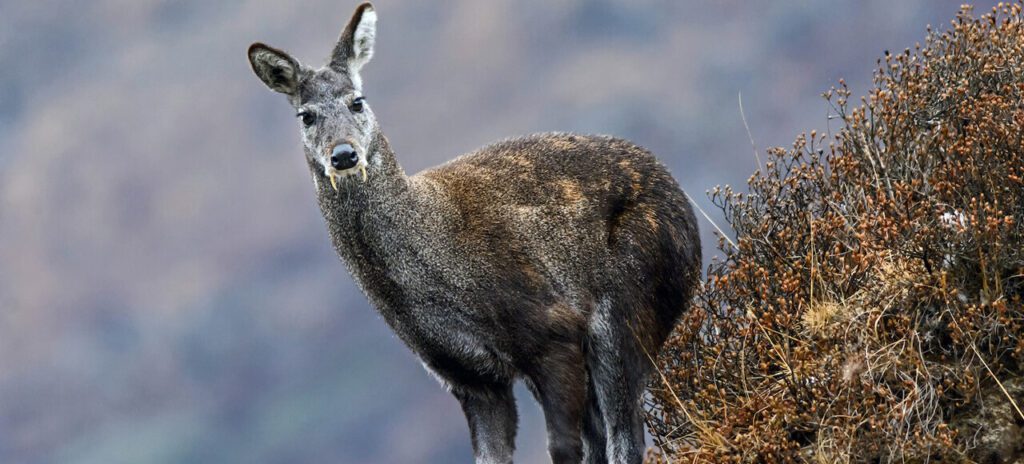
Himalayan Monal:
The Himalayan monal is a colorful pheasant that can be seen at higher elevations. These birds have striking plumage, with bright blue, green, and red feathers.
Langur Monkey:
The langur monkey is a common sight along the trekking route, especially near settlements. These monkeys have distinctive black and white fur and are known for their playful antics.
Side Treks
There are many side treks that you can take while trekking to Annapurna Base Camp in Nepal. Here are some popular ones:
Poon Hill Trek:
Poon Hill is a popular side trek that can be done before or after the Annapurna Base Camp trek. It is a short and easy trek that can be completed in 2-3 days. The trek starts from Nayapul and passes through beautiful villages like Tikhedhunga and Ghorepani.
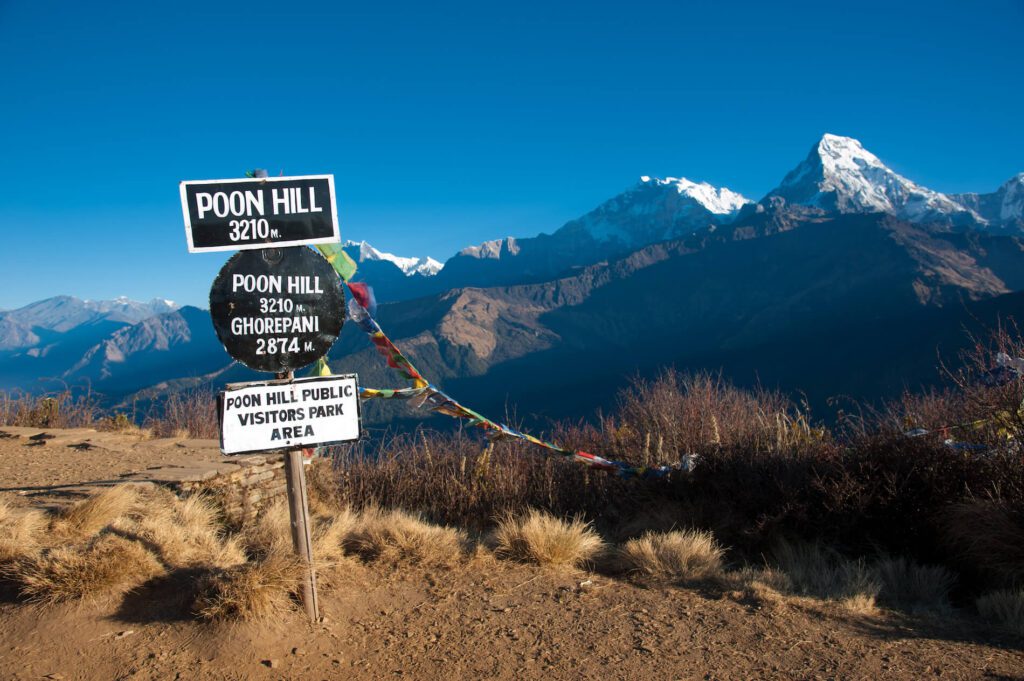
The highlight of the trek is the sunrise view from Poon Hill, which offers stunning panoramic views of the Annapurna and Dhaulagiri ranges.
Mardi Himal Trek:
The Mardi Himal trek takes you off the beaten path and offers stunning views of the Mardi Himal, Machhapuchhre, and Annapurna ranges. It is a moderate trek that can be completed in 5-6 days. The trek starts from Kande and passes through beautiful forests, traditional villages, and high alpine meadows.
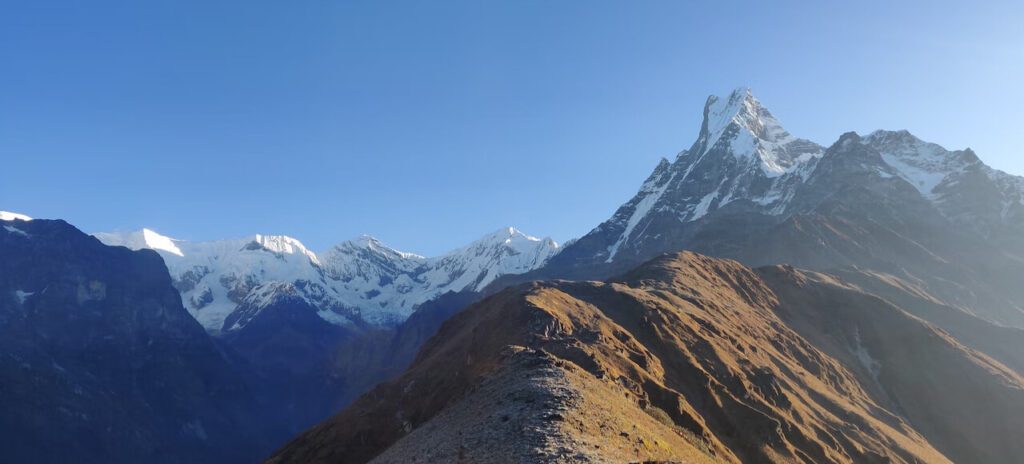
The highlight of the trek is the view from the Mardi Himal Base Camp, which offers stunning views of the Mardi Himal and Machhapuchhre.
Khopre Ridge Trek:
The Khopra Ridge Trek is a great alternative to the crowded Annapurna Base Camp trek. It offers stunning views of the Dhaulagiri and Annapurna ranges and takes you through traditional Gurung villages. It is a moderate trek that can be completed in 5-6 days.
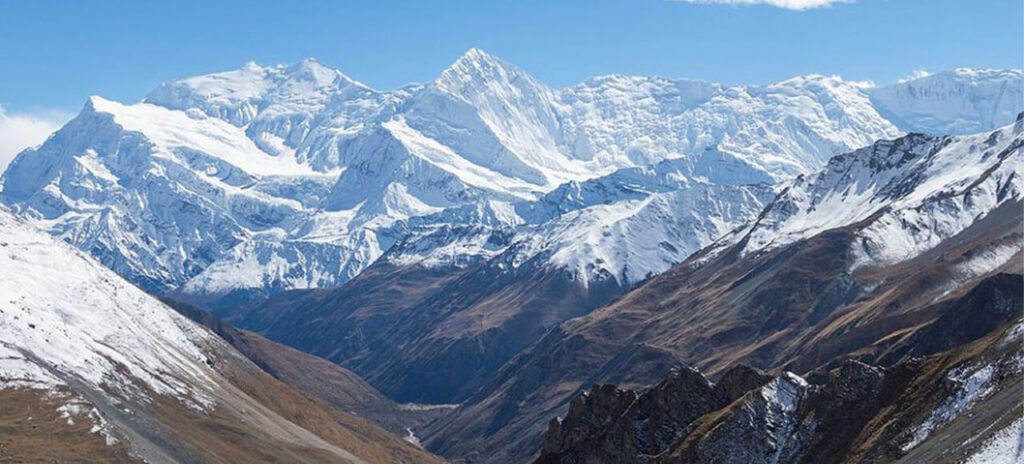
The trek starts from Nayapul and passes through beautiful villages like Ghandruk and Chistibung. The highlight of the trek is the view from Khopra Ridge, which offers stunning panoramic views of the Annapurna and Dhaulagiri ranges.
Ghandruk Trek:
The Ghandruk Trek is a short trek that takes you to the beautiful Gurung village of Ghandruk. It offers stunning views of Annapurna South, Hiunchuli, and Machhapuchhre. It can be completed in 2-3 days. The trek starts from Nayapul and passes through beautiful villages like Birethanti and Tolkha. The highlight of the trek is the view from Ghandruk, which offers stunning panoramic views of the Annapurna range.
Dhampus Trek:
The Dhampus Trek is another short trek that takes you to the village of Dhampus. It offers stunning views of the Annapurna and Dhaulagiri ranges. It can be completed in 2-3 days. The trek starts from Phedi and passes through beautiful forests and traditional villages. The highlight of the trek is the view from Dhampus, which offers stunning panoramic views of the Annapurna and Dhaulagiri ranges.
Merits and Demerits of ABC Trek in January
Trekking in January comes with its own set of advantages and disadvantages, which are discussed below:
Merits
Less Crowded:
One of the major advantages of trekking in January is that it is an off-season for trekking in Nepal, which means that there will be fewer tourists on the trail. This results in a more peaceful and enjoyable trekking experience, as there is less noise and distraction from other trekkers. You can enjoy the scenic views in a more tranquil setting.
Clear Skies:
Another advantage of trekking in January is the clear skies and stunning views of the snow-capped mountains. The lack of monsoon rains during this season means that there is minimal cloud cover, which makes it easier to get clear views of the surrounding peaks. The snow-capped peaks look even more breathtaking in the clear winter air.
Cheaper cost:
Trekking in January is also more affordable as compared to other seasons. Due to the low season, prices for accommodations, meals, and transportation are generally lower than peak season prices. This makes trekking in January a more cost-effective option for those on a budget.
Demerits
Cold Weather:
One of the main challenges is the cold weather. January is one of the coldest months in Nepal, and the temperatures can drop well below freezing at higher altitudes. Trekking in such conditions can be challenging, and proper clothing and equipment are essential.
Limited facilities:
Another challenge of trekking in January is the limited facilities along the route. Some of the teahouses and lodges along the Annapurna Base Camp trail may be closed or have limited facilities during the off-season. This means that trekkers need to carry their own food and water and make sure they have adequate accommodations for the night.
Snow and Ice:
The trails may be covered with snow and ice during January, making them slippery and treacherous. Trekkers need to be extra careful while trekking to avoid any accidents. You need to have prior trekking experience and proper gear to navigate the snowy terrain.
Tips
Trekking to the Annapurna Base Camp in January can be challenging due to the cold weather and snowfall. Here are some tips that may help you prepare for your trek:
Be prepared for the cold:
January is one of the coldest months in the Annapurna region, and temperatures can drop below freezing at night. It’s important to have warm clothing and gear to stay comfortable and safe during the trek. A good quality down jacket is a must, along with thermal underwear, warm gloves, a hat, and a sleeping bag that’s rated for cold temperatures.
Check weather conditions:
The weather can be unpredictable in the mountains, so it’s important to keep an eye on the forecast and be prepared for changing conditions. Check with your trekking agency or local guides for the latest information about weather and trail conditions, and plan accordingly.
Trekking agency and guide:
Hiring a reputable trekking agency and an experienced guide can make all the difference in your trekking experience. They will provide you with valuable information about the trail, help you plan your itinerary, and ensure your safety during the trek. Look for agencies and guides with good reviews and certifications.
Slow and steady:
The Annapurna Base Camp trek involves a significant altitude gain, and it’s important to acclimatize properly to avoid altitude sickness. Take it slow and steady, allowing your body time to adjust to the altitude. Plan your itinerary with enough rest days to help with acclimatization.
Water and food:
Staying hydrated and well-fed is important for your energy levels and overall health during the trek. Carry enough water and water purification tablets to ensure that you have access to safe drinking water. Also, carry some high-energy snacks like nuts, energy bars, and chocolate to keep your energy levels up during the trek
Trekking equipment:
Good quality trekking equipment is essential for a safe and comfortable trek. Make sure you have sturdy trekking shoes with good grip, walking poles to help with balance and reduce strain on your knees, and a backpack to carry your gear. Dress in layers to adjust to changing temperatures and conditions.
Permits:
You will need to obtain the necessary permits before starting your trek. This includes a TIMS (Trekkers Information Management System) card and an Annapurna Conservation Area Permit (ACAP). Check with your trekking agency or guide for more information about the permits required.
Let our expert team at Asian Heritage Treks and Travel take care of everything — from guided tours to personalized packing tips and travel arrangements.
Plan My Annapurna Trip







